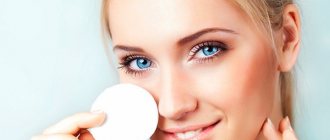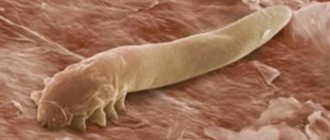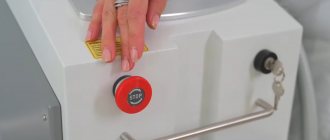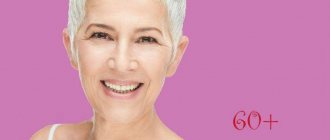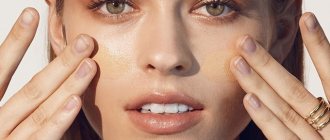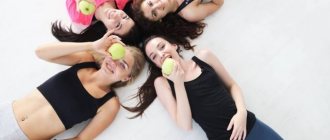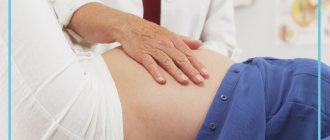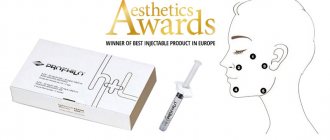Facial rashes concern not only young people, but also those over 30. Is it possible to get rid of acne and pimples forever? What remedies will help deal with them fairly quickly, without causing harm or aggravating the problem?
A safe way to clear rashes and their subsequent disappearance is retinol peeling when used systemically with other cosmetic and medicinal products. It is used at home or in a beauty salon or clinic.
Yellow peeling is a chemical method of removing (exfoliating) the upper layers of the epidermis and cleansing pores. Cosmetological cleansing evens out the color and texture of the skin, stimulates regenerative processes, and rejuvenates the face. The procedure is useful for mature skin and for solving specific problems, which include acne and pimples. Cleansing preparations contain retinol, a fat-soluble vitamin A and antioxidant. The light yellow color of the mask applied to the face gives its name to the cleansing action.
Interesting Facts! Famous foreign actresses and actors, before going on the red carpet, use a “celebrity peeling” specially created for them. The result of the mask is an instant effect and no recovery period.
Benefits of Cleaning
Cosmetic exfoliating masks with retinol have proven themselves well in cleansing the face from periodically appearing rashes: they are effective, low-toxic, with a short recovery period of 2-5 days, with virtually no side effects.
Experts recommend using specially selected peeling cocktails that can relieve inflammatory processes in the skin, slow down the growth of sebaceous gland cells and the production of subcutaneous sebum, thereby reducing or eliminating acne and pimples.
If acne occurs as a result of a bacterial infection of the facial skin and is accompanied by an inflammatory process, then the cosmetologist additionally prescribes antibiotics in addition to cleansing masks with retinoid components.
Peeling Biorepil BioRePeelCl3
Procedures performed
- Hardware lifting
- Injection cosmetology
Professional skills:
- Drawing up individual comprehensive programs for patient management for the identified problem, correction of age-related changes
- Comprehensive facial treatments for all skin types
- Hardware and mechanical facial cleansing
- Chemical superficial and mid-superficial peels
- Treatment of acne and rosacea
- Wrinkle correction with botulinum toxin type A
- Contour plastic surgery, volumetric modeling of the face, their complex use for natural harmonization of appearance
- Mesotherapy and biorevitalization, plasma therapy
- Thread lifting
- Widespread use of high-tech hardware methods in dermatology and cosmetology
Education:
In 2004 she graduated from Vladivostok State Medical University with a degree in general medicine, then underwent internship training in the specialty of dermatovenerology, after which she underwent professional retraining in the specialty of cosmetology.
Additional education:
In 2010, she completed the training course “Mesotherapy using FILORGA preparations”, took part in the seminar “Innovative programs in aesthetic medicine and professional cosmetology”
In 2011, she completed a training course on the use of dermal implants from the Restylane line
In 2012, she completed the certification course “Theory and practice of using botulinum toxin type A in aesthetic medicine” with the right to use this drug in clinical practice, successfully completed the training course “Clinical and anatomical features of correction of the periorbital zone”, and completed a training course on the use of the drug “Aqualyx” »
In 2013, she took part in a scientific and information program on anti-aging therapy “Aesthetic correction of involutional changes in the skin using the drug Botox (botulinum toxin type A-hemagglutinin complex)”, took a course in the technique of face lifting using “Silhouette Litf Soft” threads, took participation in training on chemoexfoliants from the Enerpeel line, took a training course on the use of polydioxanone threads in the correction of age-related changes.
In 2014, she took part in the dissection course: “From fundamental anatomy to sound techniques of aesthetic correction”, took part in the conference “Beauty Expert Day”
In 2016, I took the course “Correction of the midface zone. Lifting methods”, was trained in the correction of age-related changes with lifting threads made of PDO, pre-installed in a cannula, and took a certification course in the technique of using Radiesse in aesthetic dermatology.
In 2022, she took part in the dissection course “From fundamental anatomy to aesthetic facial correction, botulinum therapy, injection contouring, thread technologies
In 2022, she attended an advanced practical seminar “Lifting, reinforcement, dermo-restructuring of facial and body tissues with absorbable caprolactone threads with notches”, took part in the VII Scientific and Practical Conference Teosyal Expert Day, attended the course “Facial Anatomy for a cosmetologist with a course of anatomical dissection”, completed the dissection anatomical course “Safe and effective injection cosmetology: caprolactone and polydeoxanone threads, fillers, botulinum toxin, mesotherapy”, took part in the XIII International Conference: “Latest achievements in injection cosmetology”
In 2022, she completed training in the use of REGENLAB medical products in clinical practice for PRP therapy procedures, and attended the course “Emergency conditions in medical practice” at MGIDO
Contraindications
Retinoic cleaning in some cases is far from a safe procedure. It is hindered by:
- summer or spring seasons with aggressive exposure to ultraviolet radiation;
- pustular inflammation on the face;
- herpes in active form;
- pregnancy and lactation;
- allergies to cosmetics;
- increased pigmentation;
- epilepsy and diabetes mellitus;
- viral infections;
- liver diseases;
- fresh tan;
- wounds, scratches, abrasions;
- chronic diseases in the acute phase.
How to treat pustules* on the face and will peeling help?
Acne cannot be cured with peelings. Exfoliation is a cosmetic procedure that is performed only during the period of remission of the disease. Small pustules* on the face are a direct contraindication to peeling.
There are 3 types of peelings:
- Mechanical. Dermabrasion is carried out using abrasive particles of different sizes. During the procedure, microcirculation is activated and the natural process of exfoliation begins.
- Chemical. Problem skin is treated with drugs containing various acids. They cause a chemical burn, as a result of which the surface layer of the skin is removed and cell regeneration is triggered.
- Hardware. This includes, for example, laser peels. They are performed using erbium and carbon dioxide lasers, removing the surface layers of the skin. Another type of hardware peeling is microdermabrasion. The technique consists of spraying small mineral particles - quartz, aluminum oxide through a nozzle. Then the particles of the fine abrasive substance are removed along with the exfoliated epithelial cells.
How quickly the peeling will take effect depends, among other things, on its type. It may take about a week for the skin to recover after the procedure. During this period, the skin often turns red, itches, peels, a burning sensation and slight swelling appear. These reactions are normal in the first 7-10 days. It is important that the procedure is carried out by a specialist, since these phenomena can easily lead to an allergy to one of the components of the composition.
Is it possible to exfoliate skin with acne?
Peeling helps exfoliate the stratum corneum of the epidermis, cleanse pores, and accelerate cell regeneration. The procedure is carried out using abrasive compounds, fruit acids or degrading keratolytic enzymes. The choice of peeling largely depends on the type of problem that needs to be solved. 171
In the presence of inflammatory elements, mechanical peeling is not performed. Exposure to abrasives can damage the cap of the abscess* and spread the infection. Superficial peeling is allowed, but when performing the procedure, the skin should be thoroughly disinfected and large areas of inflammation should be avoided. 171
Is facial cleansing allowed for acne?
Manual, hardware, vacuum, ultrasonic, galvanic cleanings help remove impurities and sebaceous plugs from pores, smooth out the relief of the epidermis, and improve cellular respiration.
To achieve better results, hardware techniques are often combined with manual cleaning. However, despite the high effectiveness of facial cleansing, it should be abandoned if there are pustules and other inflammatory elements.170
How is acne treated using Azelik®️ gel?
Many people think that they can simply come to a cosmetologist and “order” the procedure. But that's not true. The cosmetologist conducts an examination and recommends which procedure is best to perform to improve the patient’s skin condition.
A combination of cosmetic procedures, drug treatment and properly selected cosmetics is exactly what is needed for acne-prone skin. Anti-acne therapy should be prescribed by a dermatologist. For mild to moderate acne, this may include the use of azelaic acid, such as Azelik®️ gel.5,9 The drug should be applied to the skin twice a day.5
*inflammatory element of acne
or leave a comment
Case from practice
Under my supervision, a 27-year-old patient was treated for moderate to severe acne. She was recommended complex therapy with systemic and topical drugs, taking into account the etiopathogenesis of the disease, the severity of its course and the characteristics of the patient’s lifestyle.
After 2 months from the start of therapy, the clinical picture stabilized, and new rashes practically did not appear, the texture of the facial skin was uneven, dyschromia and retracted scars were observed.
The patient reported that she was going to participate in a public event, so she wanted to somehow improve the appearance of her skin.
Deep invasive procedures (laser resurfacing or deep chemical peels) were undesirable due to the risk of scarring, since the course of acne therapy had not yet been completed. I offered the patient a retinoic peeling procedure using 5% retinoic acid.
Retinoic peeling
The mechanism of action of retinoic peeling is fundamentally different from the mechanism of action of other chemical peels. Retinoids do not damage the skin and do not coagulate peptides. By interacting with the own nuclear receptors of basal keratinocytes, melanocytes and fibroblasts, retinoids allow:
- reduce the size of the sebaceous glands and sebum production;
- reduce pigmentation;
- improve skin texture and relief;
- reduce the manifestations of post-acne;
- slow down the appearance of age-related skin changes of various etiologies.
The intensity of the manifestation of post-peel reactions depends on the type of skin and pre-peeling preparation: hyperemia, swelling, exfoliation of the skin.
Preparing for retinoic peeling
To reduce the skin reaction to retinoic peeling, I recommended that the patient apply Retasol® with a cotton pad to the skin of the face and neck 7 days before the procedure, once a night. « Retasol®
"contains 0.025% isotretinoin, which allows the skin to adapt and reduce the manifestations of retinoic dermatitis that develops in the early post-peeling period.
Recovery period
The recovery period after peeling took 2 weeks. During this time, I stopped the patient’s topical medications, which were prescribed as basic therapy, so as not to increase skin irritation. In addition, I recommended that she use SPF sunscreen (at least 30).
2 weeks after the procedure
Two weeks later the patient came for examination.
The skin on the face had a smoother and more uniform texture, and there were fewer rashes and residual post-acne effects. The patient was pleased with her appearance. I recommended that she continue with basic therapy.
***
Retinoic peeling is possible not only as part of comprehensive anti-age and post-acne correction programs, but also as part of a course of acne therapy in a non-acute period, preferably with pre-peel preparation.
The use of a drug containing isotretinoin at a concentration of 0.025% before retinoic peeling can reduce the post-peel skin reaction and increase the effectiveness of the procedure.
Patients will thank you!
Anna Vyacheslavovna Karpova, Ph.D. honey. Sciences, dermatovenerologist, cosmetologist, associate professor of the Department of Aesthetic Medicine of the Federal Medical Education and Science Institute of the People's Friendship University of Russia
or leave a comment
Catherine
|
17.12.2018 15:55
Hello) please tell me, after peeling with bodyaga and hydrogen peroxide, should I stop using external retinoids? And what about more gentle masks with bodyaga, for example, with white clay?Hello, Ekaterina! It is not necessary to stop taking retinoids, but there is a risk of drying out the skin.
Elvira
|
02.02.2018 13:43
Hello Anna Vyacheslavovna, thank you very much for the very informative materials on the use of retinoic peeling in the complex treatment of acne! I also really love this peeling (but have only used it in the treatment of post-acne and age group), and I have enough patients with acne and post-acne of adolescence, I have the following questions: at what age can it be done, the presence of single papules or pustules is not is a contraindication to retinoic peeling, can this peeling aggravate acne and how long before topical retinoids should be discontinued before peeling? And for pre-peeling preparation, is it possible to leave Effezel if he uses it in treatment? Thank you in advance!Hello Elvira! In my practice, I have been using this peeling since the age of 18 for moderate to severe acne and post-acne. Single papules and pustules are not a contraindication. If the patient is on topical retinoid therapy, then pre-peel preparation is not necessary. Therapy can be resumed no earlier than after 2 weeks.
Olesya
|
30.01.2018 20:50
Retinoic ointment is not available anywhere.Hello, Olesya! According to our data, Retinoic ointment is available at all distributors within the Russian Federation. If it is not available in a particular pharmacy, you can ask the pharmacy to order it, or place an order on www.apteka.ru or on the websites of other drug ordering services.
Seal
